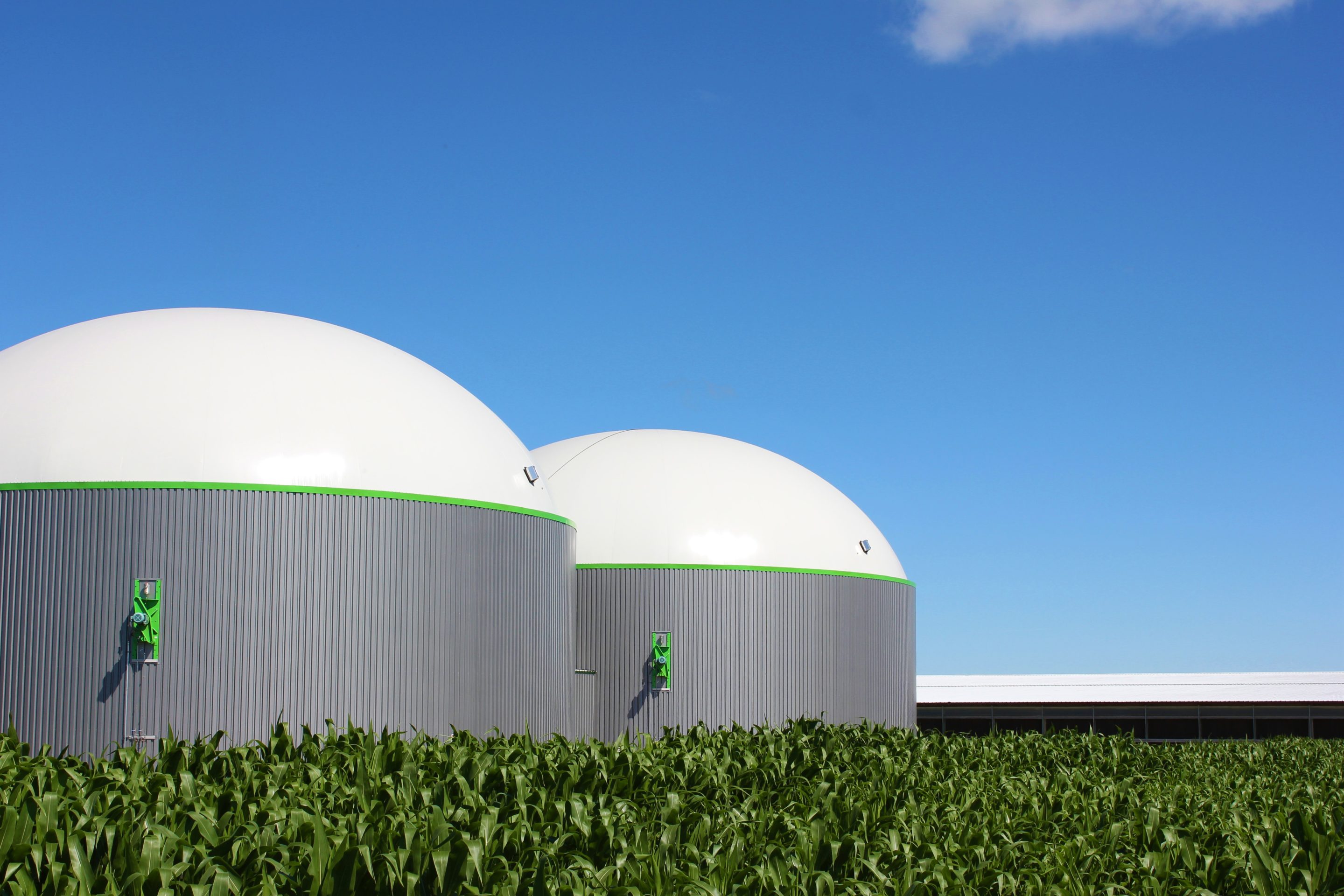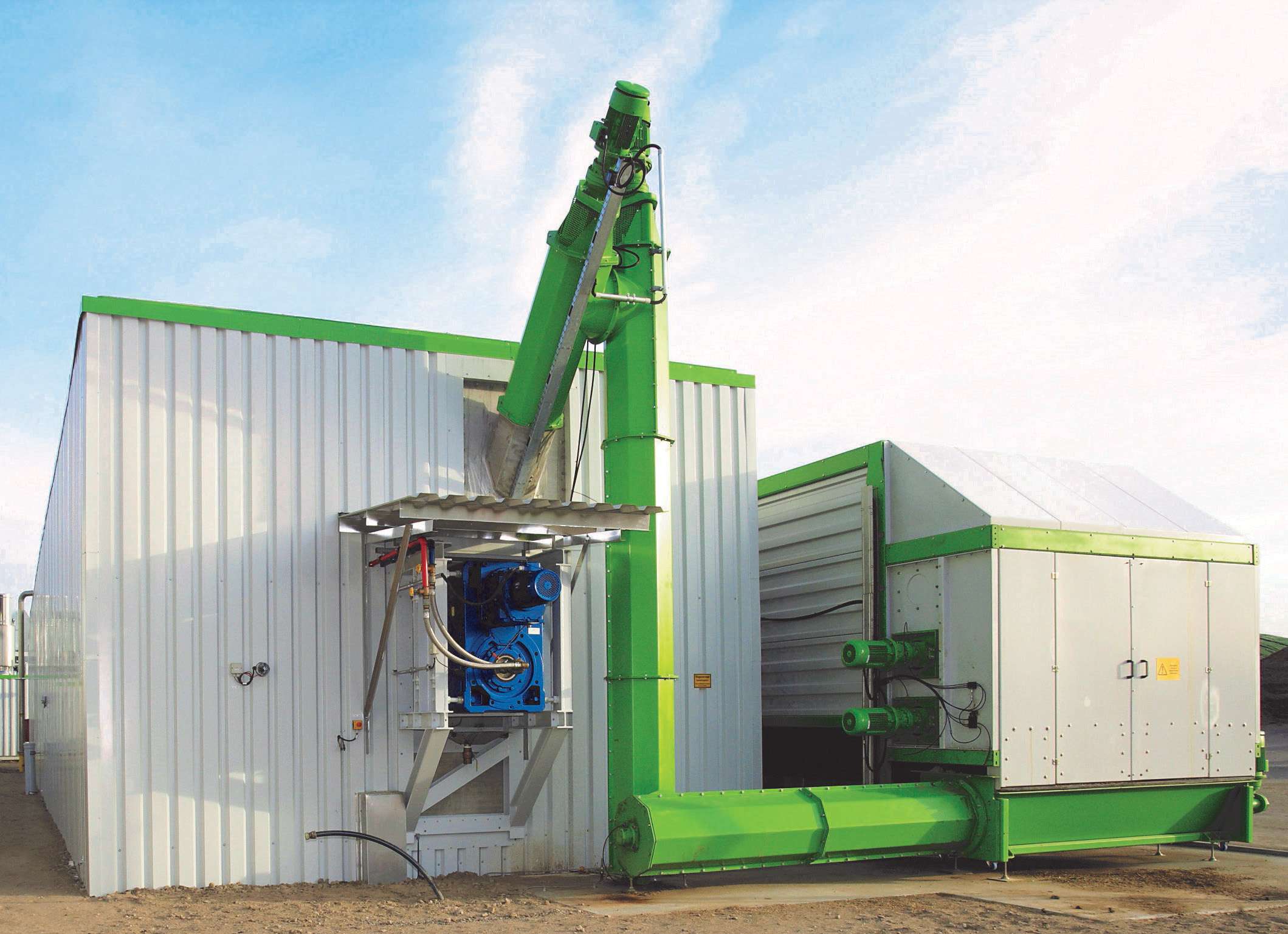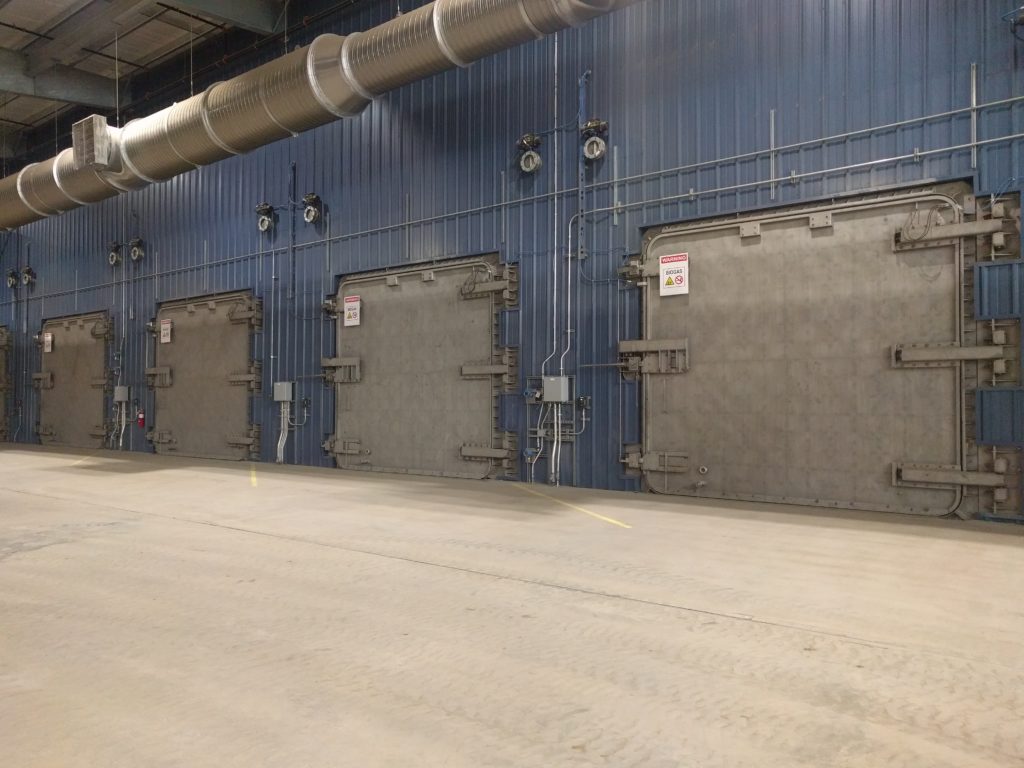AA-FES is an experienced consultant of turnkey renewable energy systems for anaerobic digestion, biogas upgrading, and solar energy.
From project conception through commissioning, we handle every aspect of the process and are committed to providing successful renewable energy projects to our customers.
Our range of biogas solutions allows for seamless integration into a variety of different operations, including agricultural operations, landfills, municipalities, water resource plants, distilleries, ethanol plants, and more.
Continuously-stirred tank reactor (AA-CSTR), plug-flow reactor (AA-PFR), and dry fermentation (AA-BR)

CONTINUOUSLY-STIRRED TANK REACTOR - AA CSTR
6-15% Total Solids
Continuously-stirred tank reactor (CSTR) complete-mix anaerobic digester tanks utilize unique paddle mixers to ensure homogeneous mixing. Ideally operating in the 6-15% total solids (TS) range at mesophilic or thermophilic temperatures (project-dependent), a variety of feedstocks can be processed. Possible feedstocks include manure, biosolids, food waste, brewery waste, energy crops, and other low-solids organics. CSTR digester tanks are available in different sizes and can be combined, depending on tank sizes and expansions. CSTR applications include dairies, wastewater treatment plants, food processors, and more. CSTR can also be paired with the horizontal plug-flow digester, for processing higher solids feedstocks like wastewater sewage sludge, waste from food processors, breweries, and more.

PLUG-FLOW REACTOR - AA PFR
10-15% Total Solids
The plug-flow reactor (PFR) digester with agitation along the thorough dimension is typically designed to operate in the mesophilic temperature range. The steel tank has a rectangular footprint and has a horizontal paddle mixer that runs slowly and at low consumption for the entire length and width of the tank. The mixer is powered by planetary drive units both ends, and the tank is heated through the horizontal mixer shaft. Depending on the project, solid or liquid feeding systems are utilized. PFR is often combined with CSTR tanks.

DRY FERMENTATION - AA BR
25%+ Total Solids
Our dry fermentation digesters process high-solids organics, such as food waste, yard waste, and other stackable organics. Although feedstocks may vary in solids contents, the system typically operates within the 25%+ total solids (TS) range. During this batch-style digestion process (which requires no internal moving parts or pumpable waste stream), organics remain stationary inside the individual, rectangular fermentation chambers. Modular design allows the system to be scaled according to the feedstock amount available. Operating in the mesophilic temperature range, dry fermentation is ideal for municipalities, food processors, campuses, composters, etc.
AA-FES is an experienced consultant of turnkey renewable energy systems for anaerobic digestion, biogas upgrading, and solar energy.
From project conception through commissioning, we handle every aspect of the process and are committed to providing successful renewable energy projects to our customers.
Our range of biogas solutions allows for seamless integration into a variety of different operations, including agricultural operations, landfills, municipalities, water resource plants, distilleries, ethanol plants, and more.
Our team is also in charge of research and development and has developed a mobile lab container within which professional analyses can be done and a pilot scale plant can be found. The main purpose of it is to study the biomasses and fermentation processes at the plants in order to make the most of biogas production and fermentation volumes.
Trace elements: we use our compositions in pure components for the AD process. We add Molybdenum, Selenium, Cobalt, Manganese, Nickel, Iron in soluble salts. Analyses are well expected.
Nitrogen: some diets run the AD process under the correct nitrogen level so that bacteria reclaim addition of this element. Urea is a chemical solution or some adequate biomass that can introduce nitrogen must be supplemented. Analyses are well expected.
Ammonia: despite the possibility of realizing a tolerance inside the AD process, ammonia must be check eighter for the reason of low percentage or for the opposite problem of toxicity. To face the problem of inhibition different technics are in use like great quantity of water, mineral composition of zeolite, chemicals. This treatment is interesting because this can give excellent results. There are also new treatments that consist of transforming ammonia in the digestant to salt that is not toxic, but the costs are relevant.
Pollutants: the use of animal waste like manure or slurry carries some molecules that are deadly to bacteria in, like disinfectants based on ammonia and chloride. The accumulation of those molecules can take the AD process down and down. So, the check of these ones can help to understand the cure. Analyses are well expected.
Partner of the Renewable Energy Community AA-CER SÜDTIROL. Thanks to AA-CER SÜDTIROL you can directly participate in the production, sharing and consumption of energy from renewable sources.
The advantages of being part of the AA-CER SUEDTIROL:
Economic: incentives on the energy produced, consumed, and self-consumed by the CER. Earnings on the energy produced and fed into the grid.
Environmental: Reduction of polluting gas emissions through the production of renewable energy; sharing energy at km 0.
Social: support for social projects, socio-economic development of the territories.
For more details
www.cer-aa.info
info@cer-aa.info
+39 0472 941 260
